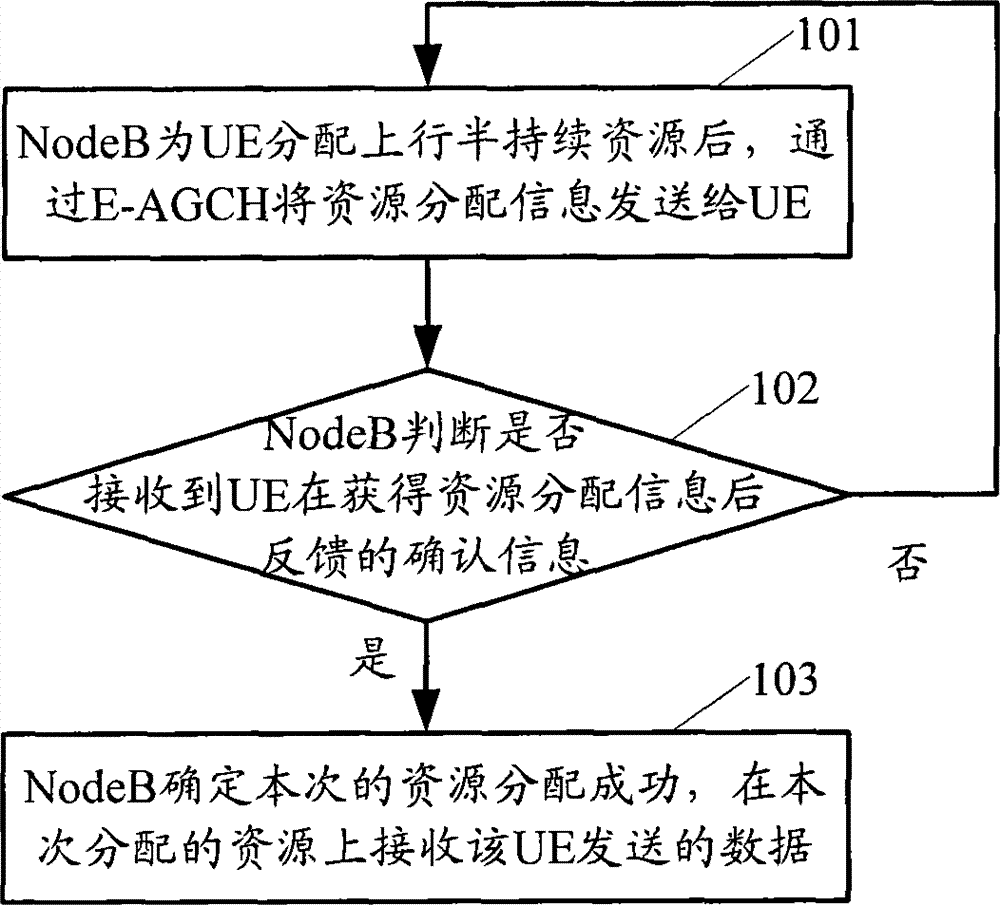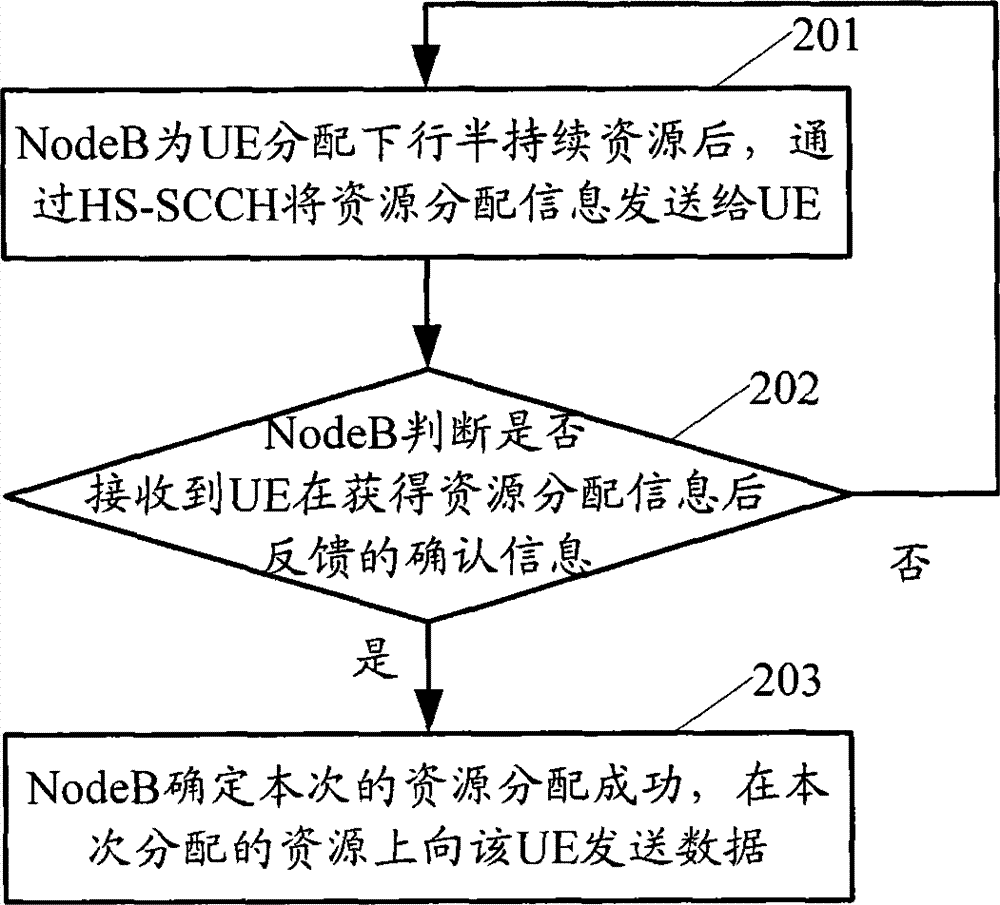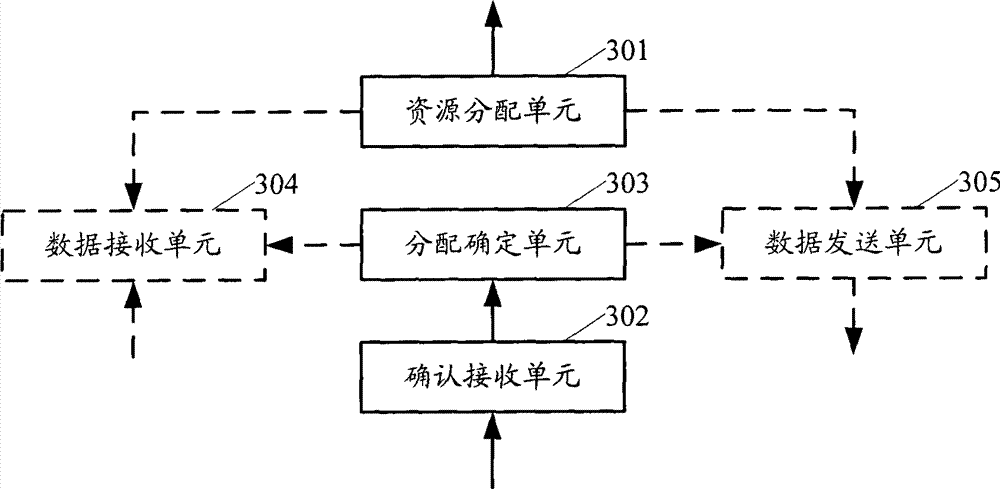Resource allocation method, base station and user end
A resource allocation and resource allocation unit technology, applied in the field of resource allocation, base stations and user terminals, can solve problems such as resource conflicts, resource use conflicts, resource waste, etc., and achieve the effect of avoiding resource waste or resource use conflicts
- Summary
- Abstract
- Description
- Claims
- Application Information
AI Technical Summary
Problems solved by technology
Method used
Image
Examples
Embodiment Construction
[0024] In order to make the object, technical solution and advantages of the present invention clearer, the present invention will be described in detail below in conjunction with the accompanying drawings and specific embodiments.
[0025] The method provided by the present invention mainly includes: after the NodeB allocates the semi-persistent resource to the UE, the NodeB sends the resource allocation information to the UE through the control channel, and if the confirmation information fed back by the UE after obtaining the resource allocation information is received, then confirm this time The resource allocation of the UE is successful; otherwise, it is confirmed that the current resource allocation to the UE fails.
[0026] The above method will be described in detail below for the uplink transmission process and the downlink transmission process respectively. figure 1 The flow chart of the method for the uplink transmission process provided by the embodiment of the pr...
PUM
 Login to View More
Login to View More Abstract
Description
Claims
Application Information
 Login to View More
Login to View More - R&D
- Intellectual Property
- Life Sciences
- Materials
- Tech Scout
- Unparalleled Data Quality
- Higher Quality Content
- 60% Fewer Hallucinations
Browse by: Latest US Patents, China's latest patents, Technical Efficacy Thesaurus, Application Domain, Technology Topic, Popular Technical Reports.
© 2025 PatSnap. All rights reserved.Legal|Privacy policy|Modern Slavery Act Transparency Statement|Sitemap|About US| Contact US: help@patsnap.com



